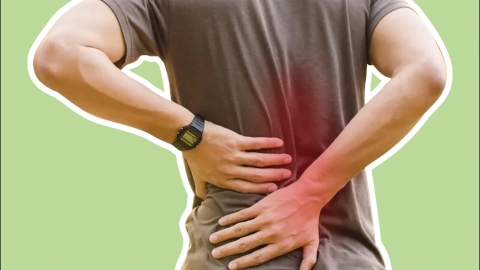Why does my lower back feel weak when I bend over?
Generally, feeling weak in the lower back when bending over may be caused by factors such as lumbar muscle strain, poor posture, lumbar disc herniation, lumbar spinal stenosis, or spondylolisthesis. It is recommended to seek medical attention promptly, identify the underlying cause, and receive appropriate treatment under a doctor's guidance. Specific analysis is as follows:

1. Lumbar Muscle Strain: Prolonged sitting or frequent bending during labor can keep the lower back muscles in a constant state of tension, leading to fatigue-related injury. This makes it difficult for the muscles to generate normal force when bending over. Daily habits should include minimizing bending movements and avoiding prolonged sitting. It is advisable to stand up and move around for 5–10 minutes every hour. Applying heat therapy to the lower back or performing stretching exercises for the back muscles can help relieve muscle tension.
2. Poor Posture: Long-term slouching or sitting with a tilted posture alters the natural curvature of the lumbar spine, causing imbalanced muscle loading and resulting in a sensation of weakness when bending. It is important to correct daily postural habits by keeping the back straight. When sitting, use a lumbar support cushion; when standing, avoid chest-in, hunched posture, and gradually correct poor body alignment.
3. Lumbar Disc Herniation: Degeneration of the intervertebral disc leads to protrusion of the nucleus pulposus, compressing nearby nerves. This causes weakness in the lower back, worsened by bending, and may be accompanied by numbness in the lower limbs. Patients may follow medical advice to take medications such as ibuprofen sustained-release capsules, diclofenac sodium enteric-coated tablets, or mecobalamin tablets to alleviate symptoms and reduce discomfort from nerve compression.
4. Lumbar Spinal Stenosis: Narrowing of the spinal canal due to bone spurs or thickening of the ligamentum flavum compresses the spinal cord and nerves, reducing lower back support when bending. Symptoms may include leg pain and intermittent claudication. Under medical guidance, patients may take celecoxib capsules, eperisone hydrochloride tablets, or vitamin B12 tablets to improve symptoms.
5. Spondylolisthesis: Displacement of a lumbar vertebra compromises spinal stability, making it difficult for the lower back to bear weight properly when bending, often causing weakness, along with low back pain and radiating pain in the lower limbs. Medications such as loxoprofen sodium tablets, tizanidine hydrochloride tablets, or etoricoxib tablets may be used as directed to relieve pain. In severe cases, surgical intervention—such as reduction and internal fixation for spondylolisthesis—may be required to restore vertebral alignment and enhance lumbar stability.
To prevent worsening of symptoms, avoid lifting heavy objects in daily life, choose a mattress with moderate firmness to reduce strain on the lower back, and engage in appropriate back muscle strengthening exercises such as "flying swallow" or "five-point support" exercises to enhance muscular support and prevent progression of lower back weakness.











